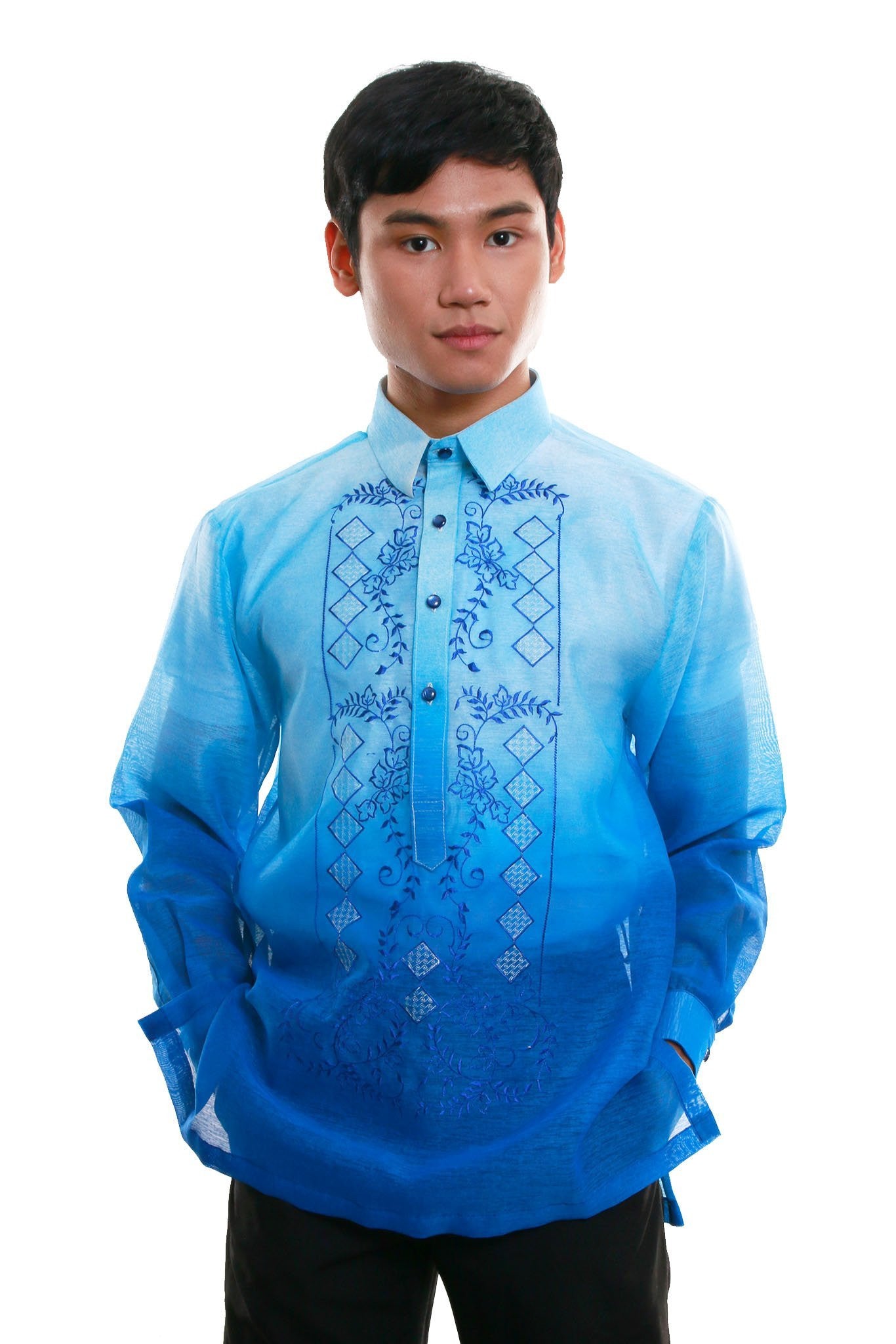The Only Guide for Black Barong Tagalog
Table of ContentsMore About Barong TagalogGetting The Barong Tagalog For Women To WorkThe Best Guide To Barong Tagalog For Women

It is a common formal or semi-formal clothes in Filipino culture, as well as is used untucked over an underwear with belted trousers and also outfit footwear. Baro't saya is the feminine equivalent of barong tagalog, with the Maria Clara dress being the formal variation of the last. Barong tagalog was likewise called ("external shirt") in Philippine Spanish. barong tagalog for female. The term is typically not exploited.
Rather, the name was coined to identify the dress as indigenous (therefore "tagalog", i. e. ), as opposed to the designs of outfit of Europeans and also other foreign cultures.
Barong tagalog can vary substantially in terms of design and also material used, but they share common qualities of having long sleeves, needlework, being buttoned (midway or straight down the upper body), as well as the lack of pockets. They are likewise used freely as well as have slits on both sides. Historically, the material used for barong tagalog relied on the social class of the wearer and the procedure of the event.
A Biased View of Custom Barong Tagalog

The top quality of the material and the intricacy of the embroidery were commonly indicators of the standing and also wide range of the wearer. The embroidery of the barong tagalog are frequently put on a rectangle-shaped section on the front of the chest (referred to as pechera, "tee shirt front", from Spanish pecho, "breast"), and/or over the entire tee shirt (sabog, from Tagalog for "scattered"). read this post here.
Background [modify] Pre-colonial age [modify] The barong tagalog stemmed from the Tagalog baro (actually "tee shirt" or "garments", likewise called bar or bay in other Philippine languages), a basic collar-less t-shirt or jacket with close-fitting lengthy sleeves worn by both guys and also ladies in most ethnic groups in the pre-colonial Philippines. These were made from harsh linen-like cloth woven from indigenous abac fiber, or from imported materials woven from silk, cotton, and also kapok, amongst others. Among Tagalog men, they were typically paired with a rectangle of highly enhanced fabric called the salaual or salawal used knee-length and formulated in the center (like an Indian or Thai and Cambodian ); while in women they were coupled with a wraparound skirt recognized as the.
, apart from comparable baro (which had much shorter sleeves) and salaual combinations, men likewise wore colorful robe-like and coat-like variations that can prolong to well below the knees (known as the marlota and also baquero in Spanish, specifically). These were occasionally belted at the waist.

The 10-Minute Rule for Barong Tagalog For Women
The couturier Jose "Pitoy" Moreno has hypothesized that this transitional style of t shirt was the camisa de chino of later centuries, which makes it a precursor to the barong tagalog. Representations of members of the upper classes (including natives and also) in the 18th century showed that they invariably wore European-style clothing. here are the findings.
These were a lot longer than the modern-day barong tagalog, getting to to somewhat above the knees. They were likewise frequently candy striped with bold colors like blue, red, or green. Nevertheless, they currently displayed characteristics of the modern barong tagalog, consisting of being constructed from sheer nipis material, needlework, long sleeves, and a loosened shape with slits on both sides - navigate to this site.
The large fabric made use of by barong mahaba also necessitated the wearing of an underwear, called camisn or camiseta, which was additionally worn on its own by commoners. By the 1840s, barong mahaba mainly befalled of style. In this duration, it advanced right into the modern-day "timeless" barong tagalog, being much shorter with less ostentatious folded up collars, while still retaining the sheer fabric and various other baro features.